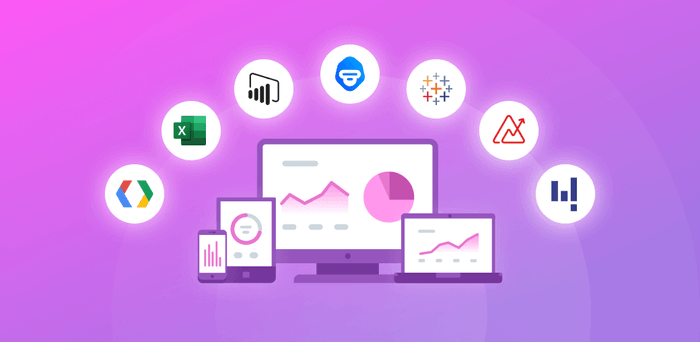We are surrounded by mounds of data, and every day, companies produce even more. However, making sense of the vast amounts of information at our disposal has become a crucial challenge. To decipher the insights hidden within data, choosing the right data visualization tools is paramount. There are many tools at our disposal, but finding the one that is cost-effective and efficient is hard to come by. Data visualization tools are immensely important. In this article, we will study the importance of data and data visualization tools and how they can be helpful in our everyday lives.
Significance of Data
Data is often described as the new oil, and rightly so. It holds immense potential for businesses and individuals alike. However, without the proper tools to interpret and communicate this data effectively, it remains untapped. This article aims to empower you with the knowledge to choose the right data visualization tools to transform your data into actionable insights.
What is Data Visualization?
Data visualization refers to how data is presented in a graphical manner. The presentation of data in the form of various graphs helps businesses in understanding and decision-making. It involves creating visual depictions like charts, graphs, and maps to make complex data more accessible. Through data visualization, companies analyze their complex data sets to make sense of them. These data sets comprise customer, company, employee, and market data.
The Significance of the Right Data Visualization Tools
Selecting the right data visualization tools is not just about creating pretty graphs; it’s about ensuring that your data tells a compelling and accurate story. The wrong tools can lead to misinterpretation, confusion, and missed opportunities. Therefore, it’s crucial to carefully consider your options.
Different Data Visualization Tools
1. Charts and Graphs
Charts and graphs are the bread and butter of data visualization. The different types are bar charts, line graphs, pie graphs, and scatter plots. These tools are excellent for displaying trends, comparisons, and distributions.
2. Dashboards
Dashboards provide a consolidated view of multiple data sources and metrics in one place. They are ideal for monitoring real-time data and gaining a holistic understanding of your business or project.
3. Mapping Tools
Mapping tools are essential when your data has a geographic component. They allow you to visualize data on maps, making it easier to identify spatial patterns and trends.
Factors to Consider Data Visualization Tools
Choosing the right data visualization tool depends on various factors. Here are some crucial considerations:
1. Data Complexity
Consider the complexity of your data. Some tools are better suited for handling large datasets, while others excel at visualizing simple data points.
2. Target Audience
Think about who will be using the visualizations. Different tools cater to different audiences, from business analysts to non-technical stakeholders.
3. Integration Capabilities
Evaluate how well the tool integrates with your existing data sources and systems. Seamless integration can save you time and effort.
4. Cost
Budget is a significant factor. Some tools offer free versions with limited features, while others require a substantial investment.
Top Data Visualization Tools
Now, let’s explore some of the top data visualization tools e.g. tableau and Power BI available in the market:
1. Tableau
Tableau is known for its user-friendly interface and robust visualization capabilities. It’s suitable and appropriate for starters, amateurs, and advanced consumers.
2. Power BI
Power BI is a Microsoft product that seamlessly integrates with other Microsoft tools. It’s powerful for creating interactive reports and dashboards.
3. QlikView
QlikView is known for its associative model, which allows users to explore data from different angles easily.
4. Google Data Studio
Google Data Studio is a free tool that integrates with various Google services. It’s great for creating simple, shareable dashboards.
Once you’ve considered all the factors and explored the options, it’s time to make your decision. Remember that there’s no one-size-fits-all solution. The best tool for you depends on your unique needs and goals.
Best Practices for Effective Data Visualization
Before you embark on your data visualization journey, keep these best practices in mind:
- Start with a clear objective.
- Choose the right type of visualization for your data.
- Keep it simple and declutter.
- Use color and design purposefully.
- Provide context and labels.
Conclusion
Data visualization is greatly important for businesses. They help organizations make important decisions regarding their business, fate, strategy, and objective. Companies use a variety of tools to visualize and process data. Data processing and analysis, if carried out with the right set of tools and solutions, can be extremely helpful in the long run. There are many tools available in the market. Companies need to select the most appropriate tool depending on their specific needs and data processing demands.

